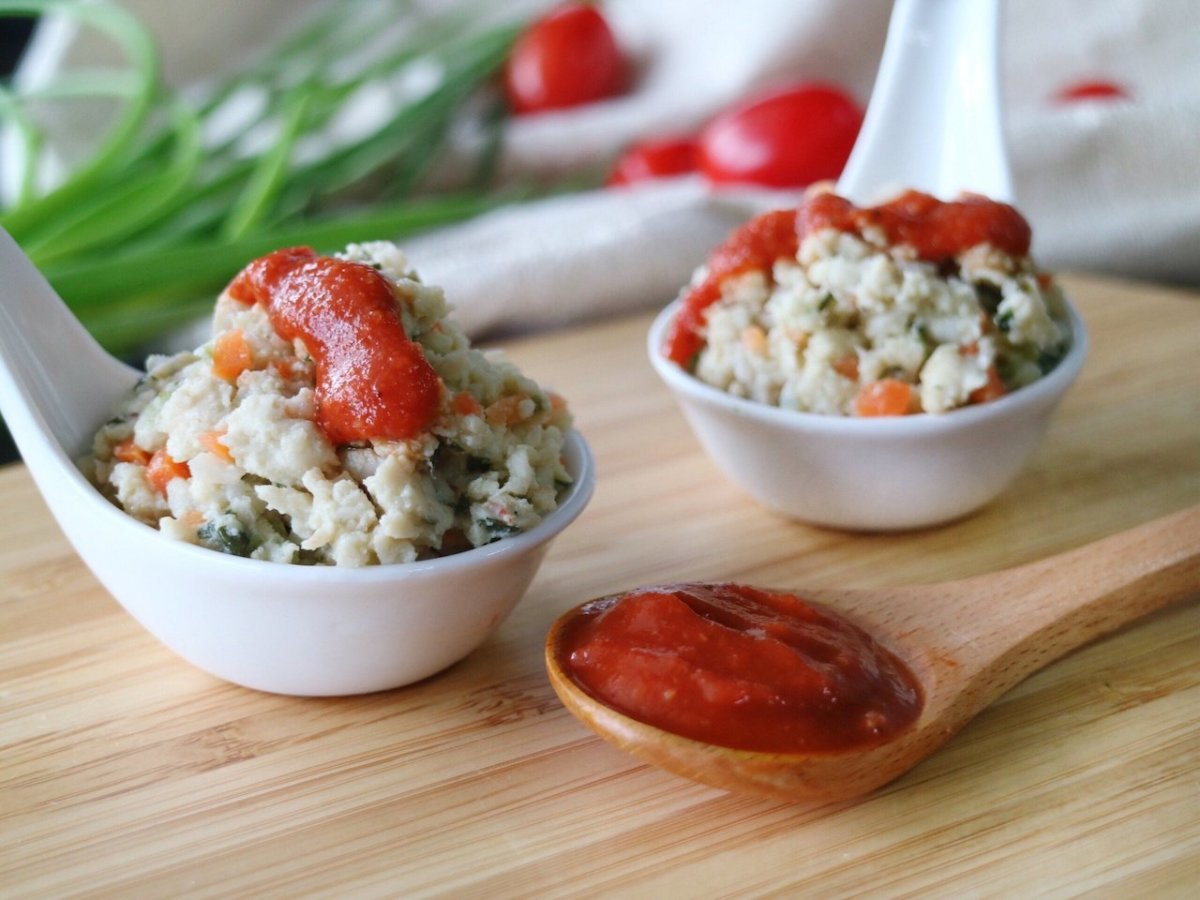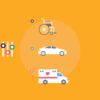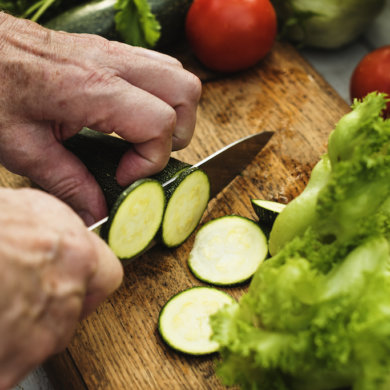If your loved one is not eating and drinking well after their stroke, they are more likely to be readmitted to the hospital for complications and their recovery will take much longer than expected. They are also likely to have longer hospital stays which increases their cost of their care and emotional burden. Therefore, it’s important to pay attention and make positive changes to what your loved one is eating after their stroke.
This approach will help them to regain their strength and energy faster, and give them a quicker recovery period, which will last through their rehabilitative treatments. Healthy eating and lifestyle habits will ultimately improve their health and reduce their risk of getting another stroke.
Click here for A Guide To Nutrition For Stroke Survivors Part 1.
Reduce the Risks: What You Can Do to Help

Malnutrition*
This serious condition occurs when your loved one suffers from a low appetite and food intake with weight loss as their caloric needs cannot be met. Usually dysphagia is a culprit that affects their ability to eat after a stroke. Malnourished people end up with more infections and trips to the hospital, therefore it’s important to ensure that we identify and act early.
- Sometimes stroke survivors end up with a weaker sense of smell and taste. Therefore, strong-tasting food can help to stimulate appetite. Use flavourful oils, vinegar, soy sauce, curry, chilli to amp up the taste.
- Promote protein at every meal ( e.g. pork, lamb, mutton, beef, chicken, turkey, quail, fish, cheese, yoghurt, nuts, legumes such as baked beans, soybean curd, soy milk, red/green beans, eggs and tofu). 1
- Promote dairy products such as milk, cheese and yoghurt which are high in calcium and have protein.
- Avoid low-calorie, low-fat and low-sugar foods as these are “empty calories”. For a person with poor appetite, the goal is to prevent them from losing weight.
- If they are eating poorly, make sure that water is given between meals rather than before a meal, so that they do not feel too full to eat.
- Offer high-energy snacks throughout the day (e.g. puddings, jellies, buns, agar-agar, ice cream, egg custard, stewed fruit, local desserts like red and green bean soups, pulut hitam, soybean curd, local snacks like soon kueh, ang ku kueh, yam cake, chwee kueh, chee cheong fun or pastries, croissants, potato chips, chocolates, cream cakes, dimsum etc.) 2
- Add peanut butter, jam, honey, or chocolate sauce to their morning porridge to bulk up the calories.
- Add margarine and oils, mayonnaise, cream, sour cream ,full cream dairy products, dried fruits, nuts, honey, jam to their meals.
- It may be easier to start a meal support service that reduces their risk of malnutrition and allow them to remain happily living in their home. 3
- Consider nutrition supplements if they are losing weight.
*It’s better to get a referral to a Dietitian to assess the problem as they can recommend a meal plan that will help your loved one recover from malnutrition. In doubt, you can reach out to our teleconsultation doctors.
Dehydration
Many stroke patients don’t feel the thirst sensation, by then, they may already be dehydrated, so it’s important to keep offering them fluids ( especially so if they are unable to communicate) regularly to prevent complications.
- Provide them moist foods, such as stews and foods with sauces.
- Provide at least 8 to 10 cups of fluids daily. These can include water, milk, juices, soups and other beverages (Try to cut down caffeinated drinks e.g. coffee and cola drinks as they tend to dehydrate the body).
- Offer hydrating jellies as a form of fluid. These tend to be better tolerated taste wise.4
- Keep their mouth and lips moist by helping them with mouth care.
- It is common for stroke survivors to end up constipated due to limited mobility or damage in the part of the brain that controls bowels and continence. Ensure they receive plenty of hydrating snacks, fluids and consider a natural fibre supplement if they are having irregular or infrequent bowel movements. 4,5
Fatigue
A lot of people experience this condition after a stroke due to the immense physical and mental changes they go through. This type of post stroke fatigue doesn’t just go away after rest, it can last for weeks and months and make it harder for someone to recover and delay their rehabilitation, therefore it’s important to speak with their doctor to identify if your loved one is experience fatigue and how you can help to manage it.
- Give your loved one plenty of time to complete their tasks. Do not rush them. Help them understand that it will take time to get better.
- Keep a diary of good days and bad days. Make sure they don’t exert themselves too much on days they feel better, otherwise they will end up exhausted later on.
- Help them with gentle exercises and social activities and take frequent breaks in between such activities.
- Establish a proper day, mealtime and night time routine.
Chewing and Swallowing problems*
These problems can occur due to the weakening of the tongue or loss of coordination from their tongue movements. Some general recommendations to help your loved one cope are:
- Choose soft and moist foods that are easy to swallow, such as bread dipped in milk/milo, scrambled eggs, steamed fish, ice cream and yoghurts.
- Refrain from sticky foods like glutinous rice.
- Cold food and drinks are helpful in soothing painful ulcers.
- It’s easier to manage food of the same texture, instead of mixing solids and liquids in the same mouthful. E.g. When serving rice/noodles with runny soup, the soup tends to slip down the throat much faster, potentially causing choking. To make it safer and easier to swallow, try thickening the soup so that it’s less runny and coats the rice/noodles properly. This thickened soup helps to moisten the noodles/rice while reducing the risk of liquids slipping down the throat too quickly.
- Cut foods into small pieces if chewing is a challenge.
- Make food easier to chew and swallow by changing the texture. Mince, chop, grate or mash. In some cases, food may need to be pureed (blended). 3
- Use a thickener to thicken up liquids to a safe consistency for them. 6
- Consider organising home delivered texture modified meals for your loved one. This way, it takes away the hassle of preparing specific textured meals and you can be assured it complies with the dysphagia diet guidelines. 3
*It’s better to get a referral to a Speech Therapist to assess the problem as they can suggest the safest texture and consistency of foods and fluids.
Limit Sodium in their Diet
It is important to limit food and drinks containing added salt, as excess sodium in the body ( found in salt and salty foods) raises blood pressure and may put your loved one at risk of another stroke. Assure them that as they reduce their salt intake gradually, their taste buds will adjust in a few weeks.
- Foods such as salted snacks, soups and gravies prepared outside, canned foods, preserved and processed foods such as hot dogs, luncheon meat, stock cubes, seasonings and sauces are high in sodium and should be reduced.
- When cooking at home, use whole spices, lemon juice or natural seasonings such as shallots, onions, garlic and parsley to spice up the cooking instead of adding table salt.
- Only add a small amount of salt or sauces after cooking. If necessary, taste the food before salt is added.
- Avoid giving pickles, sambal belachan, papadum or chutneys with their meals.
- Minimize the number of times they eat out as most food sold outside is highly salted.
- When dining out, ask for less gravy, avoid drinking the soup and limit preserved foods such as salted egg and salted fish. Also remember to request for freshly cooked items without salt, MSG or soy sauce.
- When purchasing foods, choose foods that have the ‘Healthier Choice’ symbol or those labeled ‘Low in Sodium’ or ‘No Added Salt’.
- Read food labels to compare similar foods per 100g and choose the lower sodium version.
Limit High Saturated Fat and Trans Fat foods
High saturated and trans fat foods can contribute to high cholesterol levels, and we all know that high cholesterol levels increase one’s risk of stroke. Limit:
- Fatty meats (pork/mutton/beef) and lard
- Skin and fat on chicken/duck
- Canned or processed meats (sausage/salami/luncheon meat/burger patty.
- Deep fried foods (such as fried chicken/meat/fish)
- Full cream milk and dairy products
- Coconut milk/oil and coconut products (e.g. kueh and coconut milk based dishes)
- Foods containing butter, palm/palm kernel oil, ghee
- Potato chips, pastries, cookies and cakes
- Margarine and shortenings ( e.g. Crisco, Planta)
- Shellfish
- Organ meats ( liver/brain/kidneys/intestines)
Smart Carbohydrate Choices
In general, people with diabetes are more likely to get a stroke than those without. When there is too much sugar in the blood over time with poorly controlled diabetes, clots or fat deposits can occur in the blood vessels in the neck or brain. Over time, these vessels can narrow or become completely blocked, leading to a heart attack or stroke. Therefore, it’s important to choose healthier types of carbohydrates to control blood sugar levels.
- Have whole grain/brown varieties of bread, rice, noodles, pasta and oatmeal.
- Limit refined grains such as white flour, white rice, pastry and sweetened breakfast cereals.
- Add starchy vegetables (pumpkin, sweet potatoes, corn) and legumes ( beans, lentils, split peas) to your loved ones diet.
- Encourage more fruits and vegetables (e.g.spinach, kale, chye sim, nai bai,tomato, capsicum, brinjal, bitter gourd, broccoli and cauliflower)to their daily diet.
- Limit sweetened canned/packet drinks, bubble milk tea, milkshake, flavoured coffee drinks, energy drinks, flavoured milk and cultured milk drinks.
- Limit canned fruit with syrup, dried fruit coated with sugar/honey/juice concentrates, fruit punch, fruit juice, preserved fruits.
If you found this article helpful, we recommend reading When Memories No Longer Exists: Understanding Dementia and Nutrition in Parkinson’s disease.
About Health Food Matters
At Jaga-Me, we believe that healthcare should be a social good – it is a basic human need, and should be available to as many people as possible. We aim to deliver the highest quality care through innovation and a commitment to building meaningful relationships.
Save travelling and long wait times at the hospitals. Get specialised medical treatments:
– Urinary Catheterisation
– Complex Wound Care
– Nasogastric (NG) Feeding Tube
– IV Infusion Therapy
Jaga-Me: Your Trusted Medical Home Care Professional




